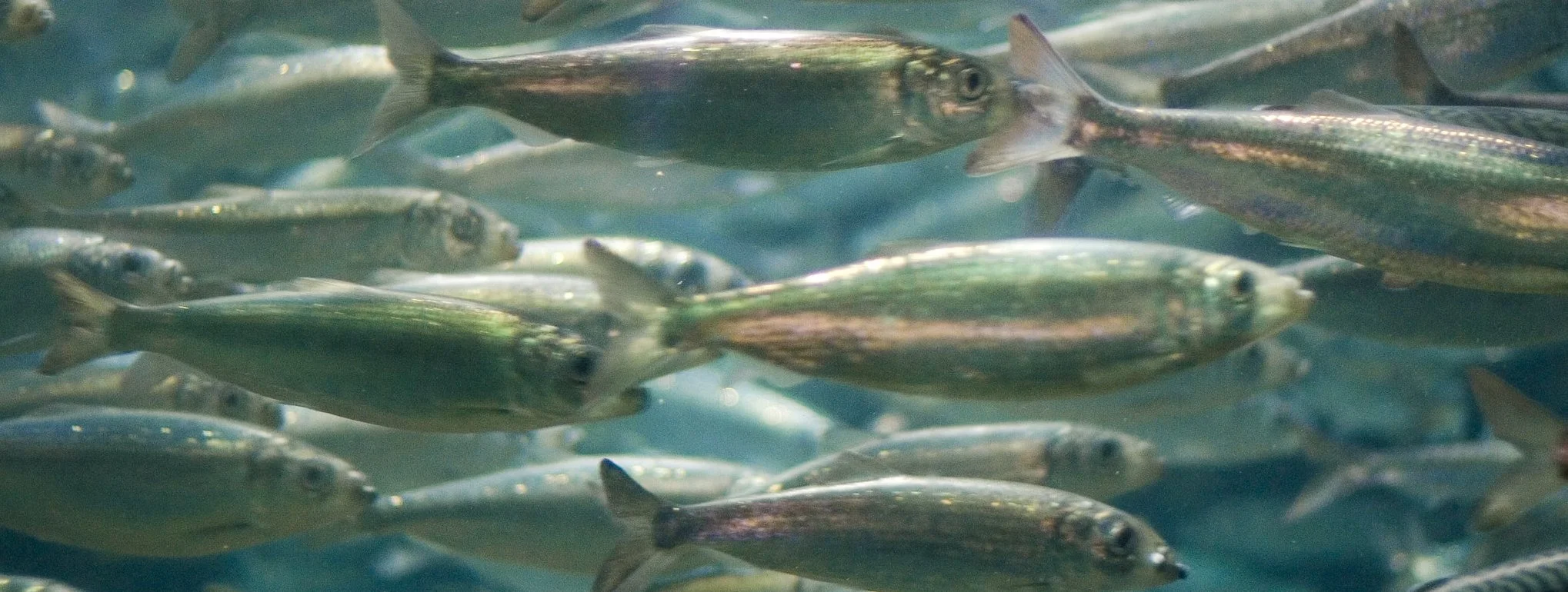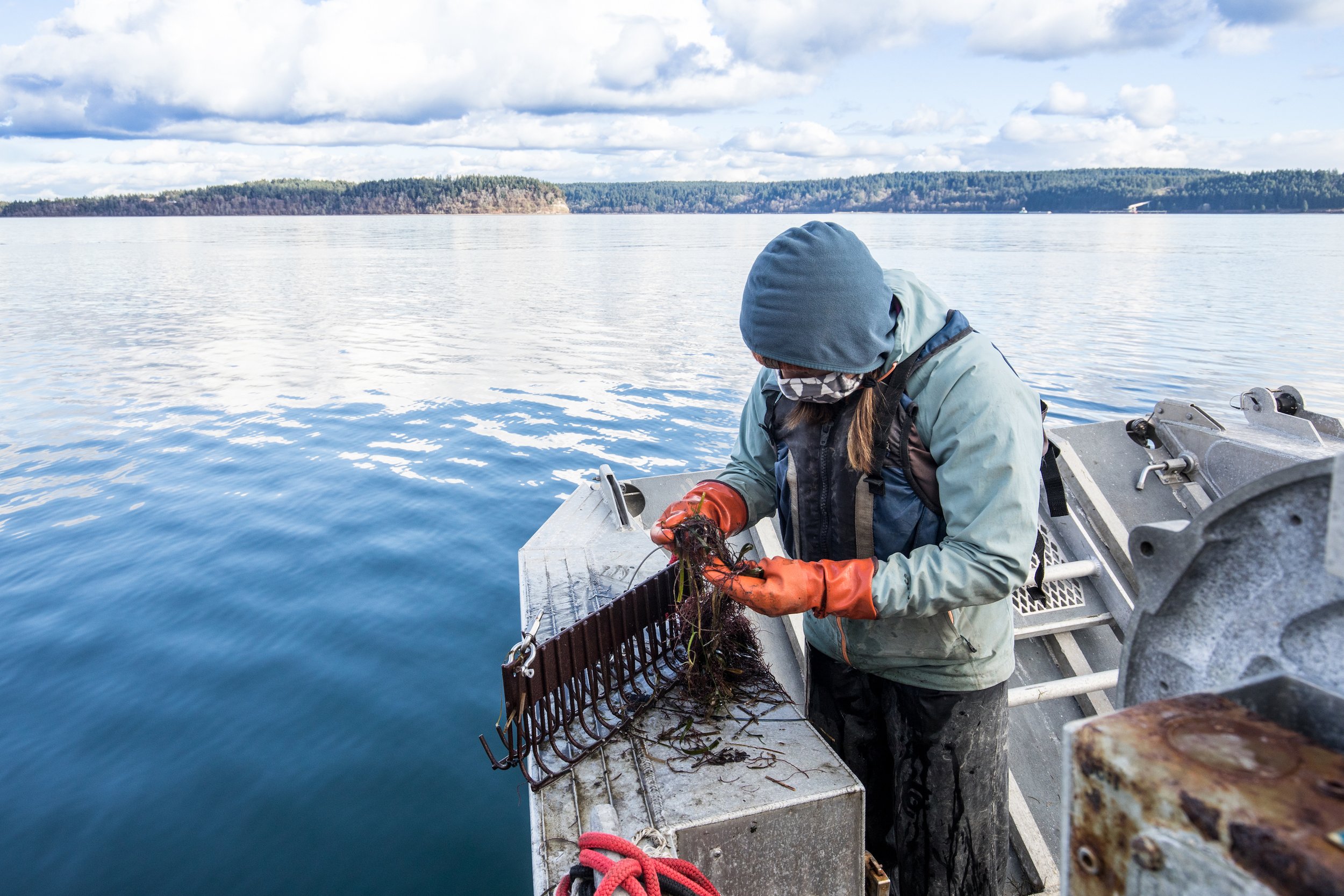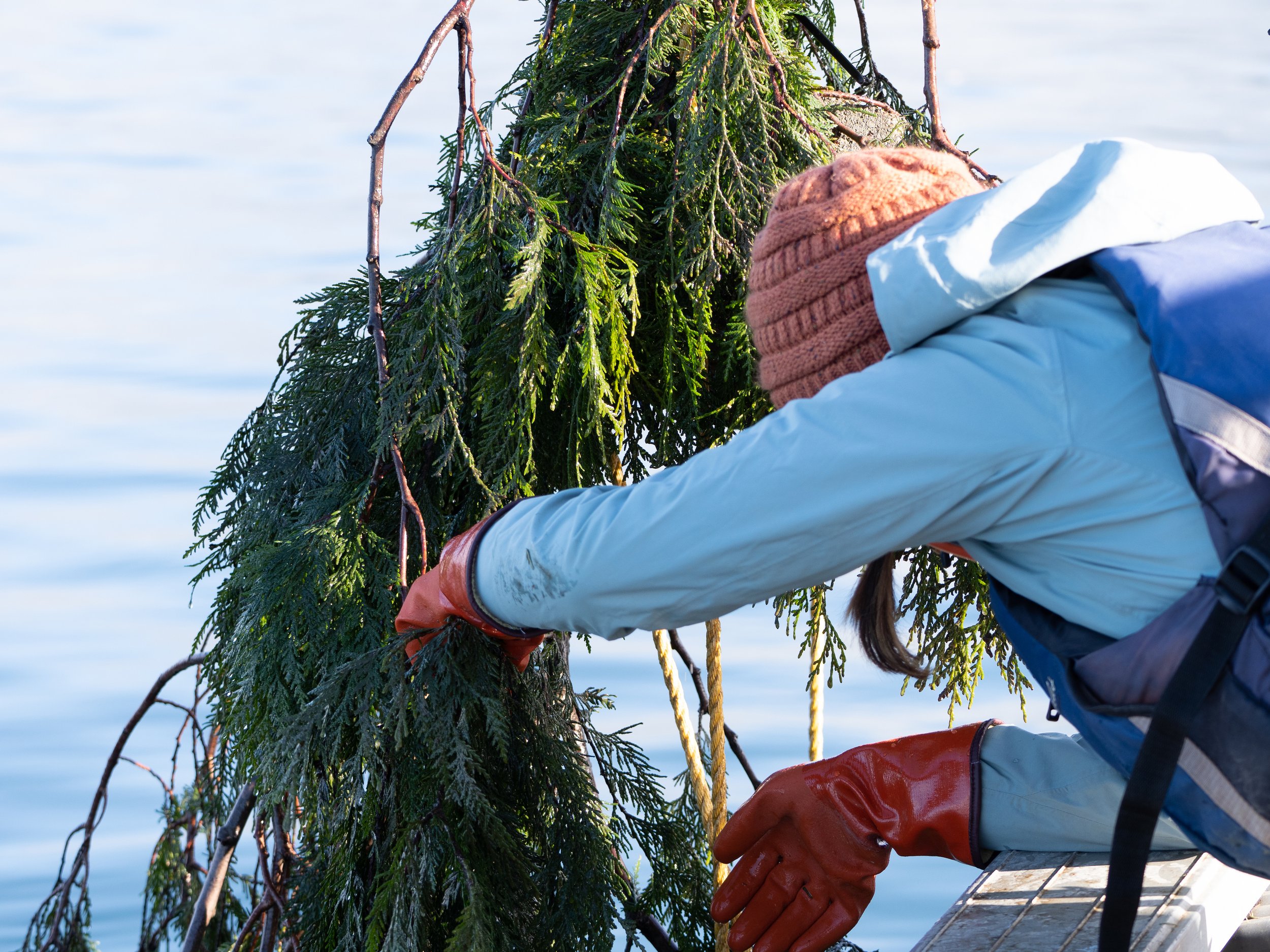Herring are a small species of fish, but they play an outsized role in the food web, culture, and the economy here in the Salish Sea and beyond. These small forage fish provide food for larger fish, birds and marine mammals all throughout the sea. If herring stocks suffer, as many of them currently do, the ecosystem-wide ripple effect is large.
This great video from Long Live the Kings highlights the SeaDoc-funded project.
Photo: Long Live the Kings
A new SeaDoc-funded study will test herring recovery tools adapted from Indigenous practices to support or improve spawning and reproduction. The collaborative work will be led by Long Live the Kings, Nisqually Indian Tribe, Port Gamble S’Klallam Tribe, Washington Department of Fish and Wildlife, University of Washington.
The team will identify herring stocks that rely on habitat in the Nisqually Reach using genetic mixed-stock analysis. In both the Nisqually Reach and in known herring spawning grounds in Port Gamble Bay, they are then adapting indigenous practices as they test new potential recovery tools.
“While we were finding herring in our research of the Nisqually River estuary and bays around it, we don’t know if they are a distinct population or ‘strays’ from one of the two known stocks of herring in South Puget Sound,” said Chris Ellings, the Nisqually Tribe’s salmon recovery manager. “We also know that there have been large-scale changes to the habitat that herring use to spawn, primarily eelgrass and bull kelp. Many of the bull kelp beds that were noted on old maritime charts are no longer there.”
One traditional method being tested by the Nisqually Tribe is sinking cedar boughs and evergreen trees near the mouth of the Nisqually River to attract spawning herring.
“Elders have been talking about that history to me for 30 years and really want there to be healthy stocks of herring to bring that food back to their table,” said David Troutt, the tribe’s natural resources director.
A key finding in the recent Salish Sea Marine Survival Project is that healthy herring and other forage fish populations are closely linked to juvenile salmon survival. Herring are both food for salmon themselves and an alternative prey source for harbor seals, which consume more salmon in years or areas where herring are less abundant.
Herring spawning stock has been in decline for decades and the concurrent lack of diverse spawning sites could have big implications on the Puget Sound and Salish Sea ecosystems. It’s an issue in urgent need of attention and action.
Herring are especially important to juvenile salmonids as post-hatch larvae and small juveniles, with larger juveniles and adults being important to larger juvenile, and then adult salmon, said Paul McCollum, the Port Gamble Tribe's natural resources manager.
"Elders here talked a lot about the magic in January and February, that when the herring came into the bay to spawn, the whole world woke up, with salmon coming in to eat the herring, ducks, marine birds and many other fish. It was a very big deal," he said. "Now the herring in Port Gamble Bay are a very small fraction of what they used to be, which is likely a major issue for the crisis in salmonid stocks here in Puget Sound."
With salmon and herring so inextricably linked in the food web, recovering salmon and the Southern Resident orcas that rely on them is directly tied to the recovery of herring.
“We launched the Salish Sea Marine Survival Project with our partners at the Pacific Salmon Foundation 10 years ago because we knew that there were major unanswered questions about which factors were limiting early marine survival for Salish Sea salmon,” said Jacques White, executive director of Long Live the Kings. “The finding that herring stocks were so important for salmon growth and survival has led us to focus on these herring recovery efforts with our Tribal partners as a critical piece for salmon and the Puget Sound ecosystem.”




